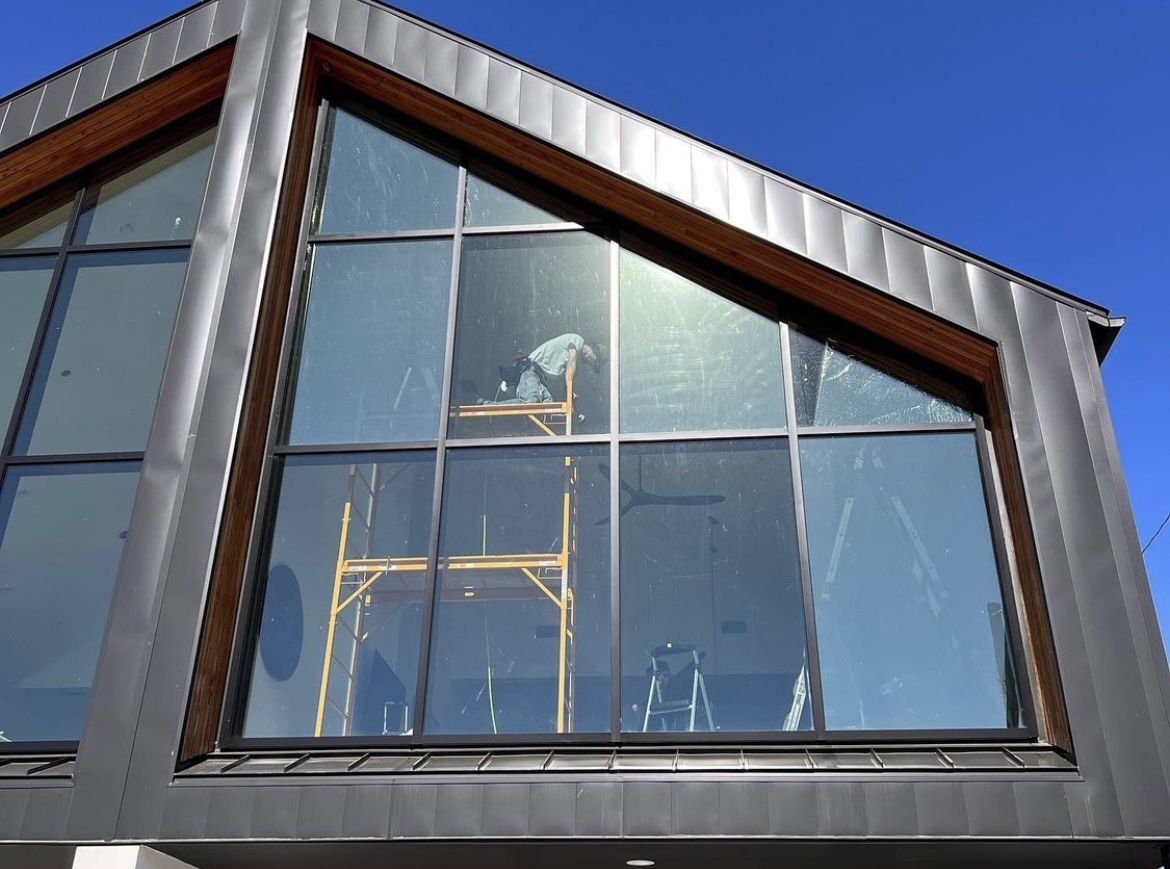Residential Window Tint: Improve Privacy and Design in Your Home
Residential Window Tint: Improve Privacy and Design in Your Home
Blog Article
Just How Residential Window Tinting Improves Your Home's Power Efficiency
Residential home window tinting offers a compelling remedy for homeowners seeking to improve energy effectiveness within their living spaces. By applying specialized films to windows, it successfully lowers warm transfer, consequently supporting interior temperature levels and minimizing the requirement for too much home heating or cooling.
Comprehending Window Tinting
Recognizing home window tinting is essential for property owners seeking to improve both comfort and power performance in their space. Residential Window Tint. Home window tinting entails the application of a thin film to the interior or outside surface of glass home windows. This movie can significantly regulate the quantity of sunshine and warm that enters a home, therefore influencing indoor climate problems
There are different types of home window tinting films readily available, each with unique homes. The performance of home window tinting is typically measured by its Visible Light Transmission (VLT) portion, which indicates how much light can pass via the film.
Advantages of Power Efficiency
Window tinting not only improves aesthetics but also plays a substantial function in boosting power performance within domestic rooms. By decreasing warmth transfer through home windows, tinted films create a much more steady indoor climate, which can bring about significant decreases in power usage for heating & cooling. This power performance translates into reduced utility expenses, giving property owners with considerable long-term financial savings.

Furthermore, home window tinting enhances the comfort of living areas. By lessening glow and obstructing hazardous UV rays, colored home windows produce a more pleasant setting, which can cause improved health for owners. The security against UV rays additionally helps maintain furniture and flooring from fading, contributing to the longevity of family things.
Exactly How Tinting Functions
Tinting films run with a mix of sophisticated products and technologies made to manage the quantity of solar power getting in a home. Mainly made up of polyester, these films often integrate metal or ceramic particles that mirror and absorb heat. This double capability enables them to considerably lower the penetration of ultraviolet (UV) rays and infrared radiation while allowing visible light to travel through.
The effectiveness of home window tinting is gauged by its solar heat gain coefficient (SHGC), which suggests just how much solar energy is transferred with the home window. Reduced SHGC values are more effective as they denote higher warm denial. Additionally, window tints can include a selection of shades, allowing house owners to tailor their visual choices while boosting power efficiency.
Additionally, these films serve as a barrier, avoiding warm loss during chillier months by showing indoor heat back right into the home. This thermal insulation effect complements the cooling benefits gotten throughout warmer months, adding to a well balanced interior environment year-round. By taking care of solar power efficiently, domestic window tinting not only enhances comfort however additionally plays an essential duty in lowering power usage and reducing energy expenses.
Selecting the Right Tint

There are different kinds of home window movies readily available, consisting of dyed, metalized, and ceramic. Ceramic movies offer superb heat control without compromising visibility and important site are highly resilient, making them a prominent option.
Noticeable light transmission (VLT) is one more critical variable, as it shows the amount of natural light that can pass through the tinted glass. Property owners ought to choose a tint with a VLT that matches their illumination preferences while still offering sufficient glare reduction.
Furthermore, analyzing the solar warm gain coefficient (SHGC) can help determine how well a color can block warm click here for info from sunlight. A lower SHGC indicates far better warmth control, inevitably improving power performance.
Setup and Maintenance Tips
Proper installment and maintenance are vital elements in making the most of the advantages of residential home window tinting. Experts also utilize specialized strategies and devices, which can enhance the durability and performance of the color.
Following installation, maintenance is vital to lengthen the life of the home window film. It is recommended to wait at least 30 days before cleaning up the tinted windows to enable the glue to heal totally.
Dealing with these concerns without delay can avoid additional damage and keep energy efficiency. By sticking to these installation and maintenance pointers, home owners can ensure their window tinting proceeds to offer substantial power cost savings and comfort for years to come.
Verdict
In conclusion, property window tinting serves as a reliable remedy for improving look at these guys energy efficiency within homes. By lowering warmth transfer and obstructing damaging UV rays, home window movies contribute to reduce power usage and improved indoor comfort.
Home window tinting involves the application of a thin film to the inside or exterior surface of glass windows. By minimizing warmth transfer through windows, colored movies create a more steady interior environment, which can lead to substantial decreases in power consumption for heating and cooling.The efficiency of window tinting is gauged by its solar warmth gain coefficient (SHGC), which indicates how much solar energy is transmitted through the window. By handling solar power successfully, household home window tinting not just improves convenience yet additionally plays an essential duty in reducing power consumption and reducing utility expenses.
By decreasing warm transfer and blocking damaging UV rays, home window movies add to decrease power usage and enhanced indoor convenience.
Report this page